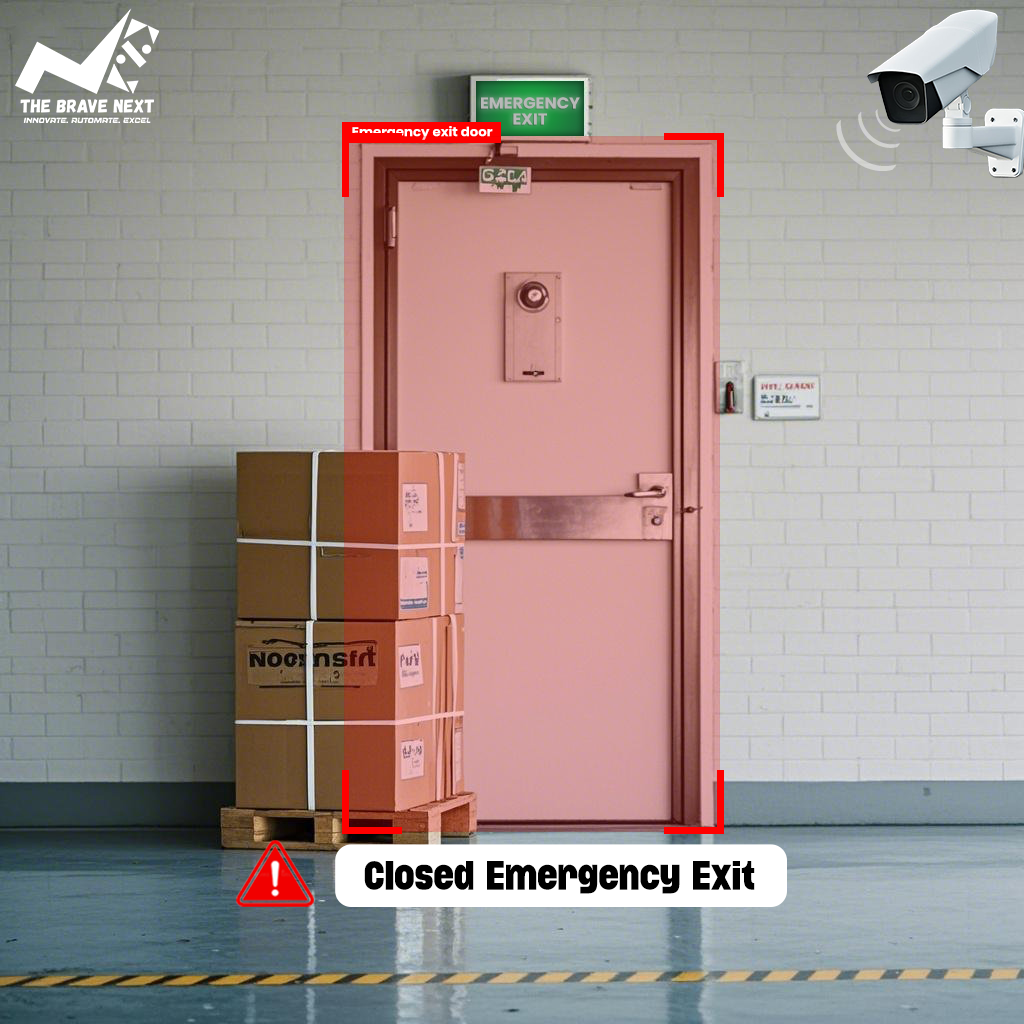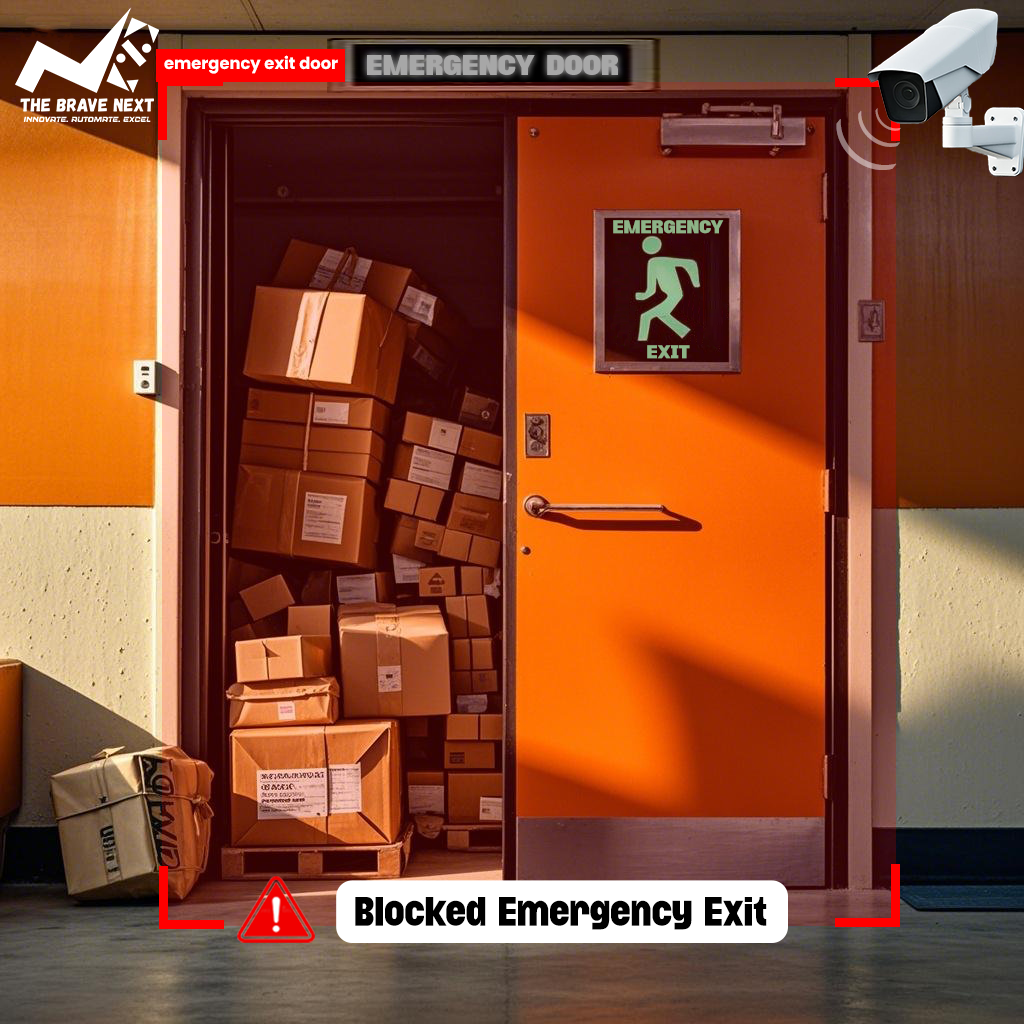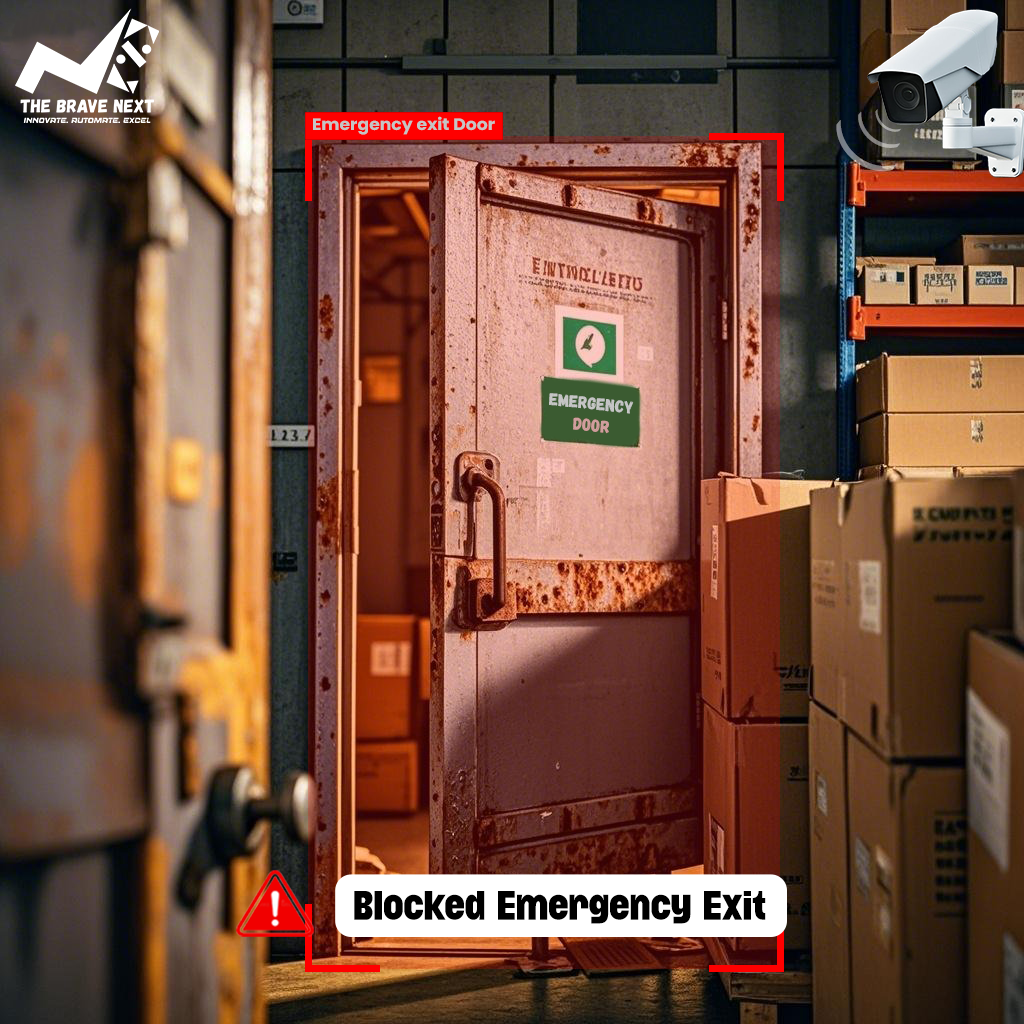



In the face of disaster—be it a fire, earthquake, or any unforeseen crisis—swift and safe evacuation can be the difference between life and death. Emergency exit doors are designed to be the ultimate lifeline in such moments, providing crucial escape routes for building occupants. However, these exits are often at risk of being compromised, whether by malfunctioning mechanisms, obstructions, or blockages. Enter AI-powered emergency exit door detection systems—advanced solutions that ensure these life-saving doors remain functional and clear when most needed.
Emergency exits are critical to saving lives, but despite their importance, many face issues that render them unreliable in an emergency:
Wear and tear on locks, hinges, or even weather conditions can cause the door to jam, rendering it impossible to open when it’s needed most.
Sometimes, emergency exits are physically blocked by furniture, storage, or other obstacles—either due to poor planning or negligence.
Even if the exit is free of physical barriers, fallen objects or debris in the surrounding area can prevent a safe and quick passage.
The consequence? Delays in evacuation that can escalate into fatal situations. Immediate identification of these issues is crucial to preventing such disasters.
AI technology is revolutionizing safety and emergency preparedness across industries—and it’s playing a vital role in safeguarding emergency exits. Here’s how:
AI systems paired with high-resolution cameras provide continuous, real-time surveillance of emergency exits. Using computer vision algorithms, the system detects potential blockages, malfunctioning components, and obstructions around the door.
AI analyzes footage from cameras installed near exit doors, flagging anomalies such as objects blocking the door or signs of mechanical malfunction.
Advanced deep learning models can pinpoint any item obstructing the door, instantly alerting security teams for immediate action.
AI can also predict when emergency doors are at risk of malfunctioning before a jam occurs. By continuously monitoring sensors attached to door hardware (locks, hinges, and handles), AI identifies wear patterns and warns when maintenance is needed.
Sensors measure various parameters like door movement, pressure, and temperature, feeding real-time data into AI models. These models predict potential issues, like a door becoming harder to open, and send alerts before the situation escalates.
Once an issue is detected, AI systems automatically notify maintenance teams to perform necessary repairs, preventing door failures during an emergency.
AI-powered door detection seamlessly integrates with a building’s existing BMS to enhance overall safety and response times during an emergency.
Building managers gain access to real-time data on the status of all emergency exits, allowing them to monitor and control the doors from a central location. The system can automatically lock/unlock doors based on evacuation plans.
In case of blocked exits, AI can dynamically redirect evacuees to functional doors, ensuring smooth evacuation even if one or more routes are compromised.
AI-powered detection systems enhance communication during an emergency by issuing real-time voice and visual alerts.
If a door is blocked or malfunctioning, AI triggers an automatic voice message throughout the building, guiding people to alternative exits.
AI systems can activate red lights, flashing signals, or display messages on digital signage to show the status of emergency exits, offering clear guidance on the safest escape routes.
Beyond just ensuring doors are functional, AI solutions play a role in overall building security. These systems monitor emergency exits for tampering or unauthorized access during non-emergency times.
AI cameras constantly monitor exit areas for signs of tampering, alerting security personnel if there’s an attempt to obstruct a door intentionally.
AI can simulate different emergency scenarios to evaluate exit routes, ensuring that each one performs optimally under various conditions.


The introduction of AI-powered detection systems brings a wealth of benefits that directly impact safety, cost-efficiency, and operational effectiveness:
The primary benefit is enhanced safety. With AI keeping constant watch, emergency exits are always ensured to be clear and functional during emergencies.
Predictive maintenance minimizes the risk of expensive repairs and replacements, ensuring doors are fixed before they become critical.
AI detects issues faster and more accurately than human monitoring, providing quicker resolutions and less downtime.
AI systems ensure compliance with safety regulations by continuously monitoring doors and generating automated reports on their status.
With AI doing the heavy lifting, building managers and occupants can rest assured that emergency exit doors are continuously being monitored and maintained for optimal safety.
As AI technology continues to evolve, so too will its role in emergency preparedness. The future could see even more groundbreaking solutions, including:
Drones equipped with AI could patrol exit routes, scanning for obstructions and conducting real-time assessments to ensure access is never compromised.
Future sensors may become even more sophisticated, detecting malfunctions or blockages before they occur, providing even greater foresight.
Imagine a system where wearable devices sync with AI-powered exit door systems. If a person approaches a blocked or malfunctioning exit, they would receive a real-time notification guiding them to the safest route.
AI-powered emergency exit door detection is a game-changing advancement in building safety. By combining real-time monitoring, predictive maintenance, and intelligent alerts, AI ensures that emergency exits remain unblocked, functional, and ready for use when every second counts. The integration of AI with existing building systems, enhanced security features, and future innovations will only expand the possibilities for safer, smarter buildings.
In a world where every life matters, embracing AI-powered emergency exit door detection isn’t just a technological upgrade—it’s a responsibility. By adopting these advanced systems, we can make sure that when the worst happens, we’re prepared to ensure the safety of everyone inside.
AI uses cameras and sensors to monitor emergency exits in real-time, detecting blockages, jams, or malfunctions. It alerts building management for immediate action and integrates with building systems for automated responses during emergencies.
Benefits include enhanced safety, predictive maintenance, real-time alerts, cost savings, and regulatory compliance to ensure emergency exits remain functional and clear during emergencies.
Yes, AI systems can integrate with BMS to provide centralized control, monitor door statuses, and automatically adjust exits during emergencies to ensure safety and efficiency.
Please send your query or requirements in detail via whatsapp, and we will respond shortly.
Thank you!